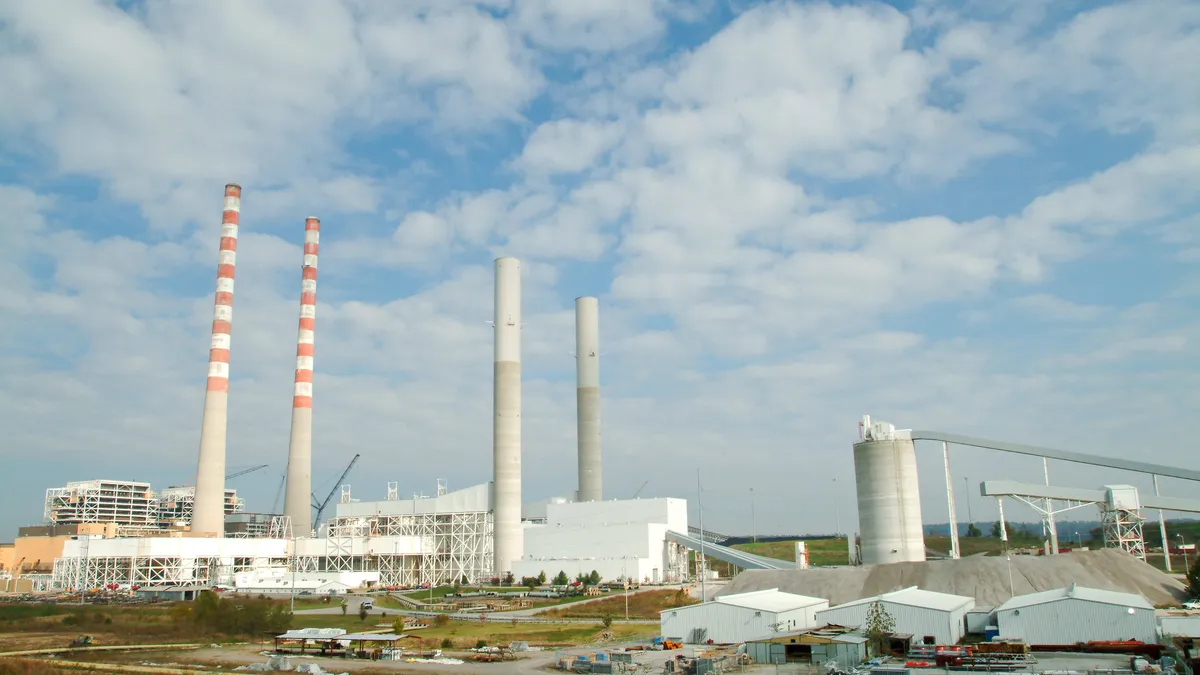Dive Brief:
- As the Tennessee Valley Authority is considering options for replacing two coal-fired power plants, three nominees to the federal power utility's board told a Senate panel on Wednesday they would explore adding more renewable energy to TVA's system.
- "TVA should be at the forefront of ensuring fair prices for ratepayers, incentivizing energy efficiency, and transitioning swiftly toward cleaner energy generation," Senate Environment and Public Works Committee Chairman Tom Carper, D-Del., said in a statement. "While TVA has already made some progress toward a clean energy transition, other private utilities have far surpassed TVA's clean energy and energy efficiency commitments."
- A day before the confirmation hearing, the Southern Alliance for Clean Energy, Appalachian Voices, Sierra Club and other groups formed the Clean Up TVA Coalition to press the federal utility to eliminate its greenhouse gas emissions by 2030 compared with its goal of reducing emissions 80% by 2035.
Dive Insight:
With the TVA poised to make major decisions on its generating fleet, the status of its nine-member board has come into focus.
"They are the regulator of TVA," Maggie Shober, Southern Alliance for Clean Energy research director, said Thursday. "They're the ultimate decision makers on the direction of TVA's strategy."
There are only five sitting board members, the minimum needed to make decisions. Two members have terms that end in May, although they are allowed to stay until Congress ends its session at the end of the year. The current members were named by former President Donald Trump.
During the Senate Clean Air, Climate, and Nuclear Safety Subcommittee's nomination hearing, panel Chairman Ed Markey, D-Mass., pressed the TVA to add more renewable energy to its generating portfolio, which he said would be less expensive and better for the environment than fossil-fueled power plants.
The TVA got 3% of its electricity from wind and solar last year compared with 13% for the United States, according to Markey.
"I grew up really thinking the TVA was the state of the art and it's pretty obvious there's no movement here technologically," Markey said.
Ranking member James Inhofe, R-Okla., said replacing coal-fired generation with gas-fired power plants would be cheaper and more reliable than making the swap with wind and solar.
The TVA, which supplies power to about 10 million people in the Southeast, owns five coal-fired power plants totaling 6,580 MW, which the utility plans to retire by 2035. They accounted for 15% of the federal power marketer's electric supply last year, according to the TVA's most recent annual report.
Nuclear generation made up 41% of the TVA's power supply last year, followed by plants that burn gas and/or oil at 21%, hydro at 10%, fossil-fueled power purchase agreements at 8% and renewable PPAs at 5%. The TVA is in the process of adding 2,000 MW of gas-fired generation, which it expects to be fully online by the end of 2024.
The TVA plans to retire its 765-MW coal-fired Bull Run power plant late next year. It is also considering retiring and replacing two other coal-fired plants: the 2,470-MW Cumberland plant and the 1,300-MW Kingston plant.
The TVA is evaluating three options for replacing the Cumberland and Kingston plants: new combined cycle power plants, new combustion turbine units, and wind and solar.
In November, the TVA board authorized TVA CEO Jeffrey Lyash to decide whether and how to replace the Cumberland and Kingston plants, with a $3.5 billion budget.
The TVA expects to issue a draft environmental impact statement evaluating its options for the Cumberland plant this month and a draft EIS for the Kingston plant late in the summer, according to a February letter to the House Energy and Commerce Committee, which is investigating the federal utility's electric rates and decarbonization efforts.
No decision has been made on how to replace the coal-fired power plants, according to Scott Fielder, a TVA spokesman.
However, gas-fired generation offers multiple benefits, Fielder said Thursday in an email.
"Short-term, natural gas generation helps make up for generating capacity we lose as we retire coal units, and it's cleaner and more efficient than coal," Fielder said. "Longer-term, natural gas enables us to reliably add more renewable generation while new technologies are still being developed, such as better energy storage and nuclear technology."
Gas-fired generation can be used to integrate intermittent renewable energy onto its system, according to Fielder.
It appears the TVA intends to replace the Cumberland and Kingston plants with gas-fired generation, SACE's Shober said, noting the federal utility has started the process of getting federal approval for a gas pipeline to supply a possible 1,450-MW plant to replace one of the Cumberland units.
Adding more gas-fired generation will increase the TVA's exposure to gas price fluctuations driven by international markets, according to Shober.
The Clean Up TVA Coalition will try to steer the federal utility towards renewable energy, energy storage and energy efficiency, Shober said.
On another issue the TVA's board must contend with, Memphis Light Gas & Water, which accounts for 10% of the federal utility's electric sales, is considering leaving the TVA to import power from the Midcontinent Independent System Operator, according to Shober.
A preliminary analysis found MLGW could save up to $400 million a year by leaving TVA, Shober said, adding that the utility is reviewing the results of a request for proposals and is expected to make a decision later this year.













